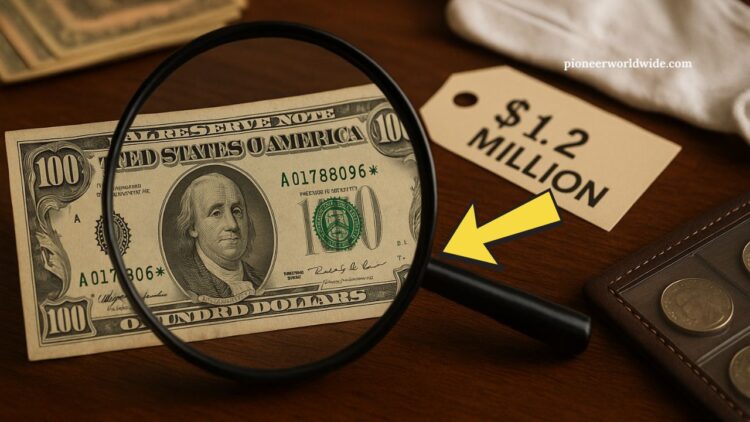Imagine finding a seemingly ordinary 1969 $100 bill in your possession, only to discover it’s worth a staggering $1.2 million. That’s exactly what happened recently when a rare misprinted bill from the 1969 series sold at auction for this astronomical figure.
For collectors and curious onlookers alike, this is a thrilling example of how a simple printing defect can turn an everyday bill into a priceless treasure.
In this article, you’ll learn what sets this note apart, why misprints matter, explore key facts and figures, and check if you might be holding a hidden fortune.
What Makes This 1969 $100 Bill Extraordinary?
The standout feature of this note is its misprint, specifically a mis-cut alignment error. During printing, sheets of currency are misaligned, causing portions of the design to be shifted or missing. These errors are rare due to stringent quality controls, making them highly sought after by numismatics enthusiasts.
Auction Highlights
Here is a breakdown of the auction details:
| Detail | Information |
|---|---|
| Year/Series | 1969 |
| Denomination | $100 |
| Error Type | Mis-cut alignment |
| Auction Sale Price | $1.2 million |
| Condition | High-grade; pristine |
| Auction Date | Early July 2025 |
Despite being printed over 50 years ago, its pristine condition and significant printing defect propelled its value to an extraordinary $1.2 million.
Why Currency Misprints Golf Such High Prices
- Uncommon Flaws: Most misprints are chit-chat anomalies—partial cuts, shifted inks, or missing edges.
- Collector Demand: Genuine, high-grade misprints are coveted rarities within the error-currency community.
- Provenance & Market Hype: Once a piece like this sells for millions, it sets a new benchmark, driving interest and future prices.
Spotting Misprinted Bills Like This
If you’re curious whether your bills might hold similar value, look out for:
- Visible misalignment between the bill’s border and design.
- Partial or cropped serial numbers or seals.
- A clean cut but incorrectly centered print.
- Intact, crisp condition—creases or handling significantly reduce value.
- Bills graded by professional companies like PMG or PCGS, which authenticate and certify condition and error type.
Other Known High-Value Misprint Cases
While the 1969 note set a new record, currency errors have consistently fetched high prices:
- The infamous “Del Monte” $20 note sold for $396,000.
- Small misprint errors from the 2000s to 2010s have brought thousands—some even six figures depending on severity and rarity.
A rare misprint on a 1969 $100 bill just sold for $1.2 million, proving that even everyday objects can become priceless treasures.
If you hold a note with unusual cuts or alignment defects, especially in near-perfect condition, you may have a significant financial windfall. Get it professionally graded, and who knows? Your old bill could become the next headline.
FAQs
How rare is a misprinted bill selling for over $1 million?
Extremely rare. Most misprints fetch anywhere from a few hundred to a few thousand dollars. A $1 million sale marks a historic high.
Can I get a misprint graded?
Absolutely. Submit unique error bills to graders like PMG or PCGS. A grade and certification significantly boost credibility and value.
Are all misprints valuable?
Not all. Common defects with minor shifts or minor edge trims yield modest returns. Value hinges on rarity, type of error, and condition.
